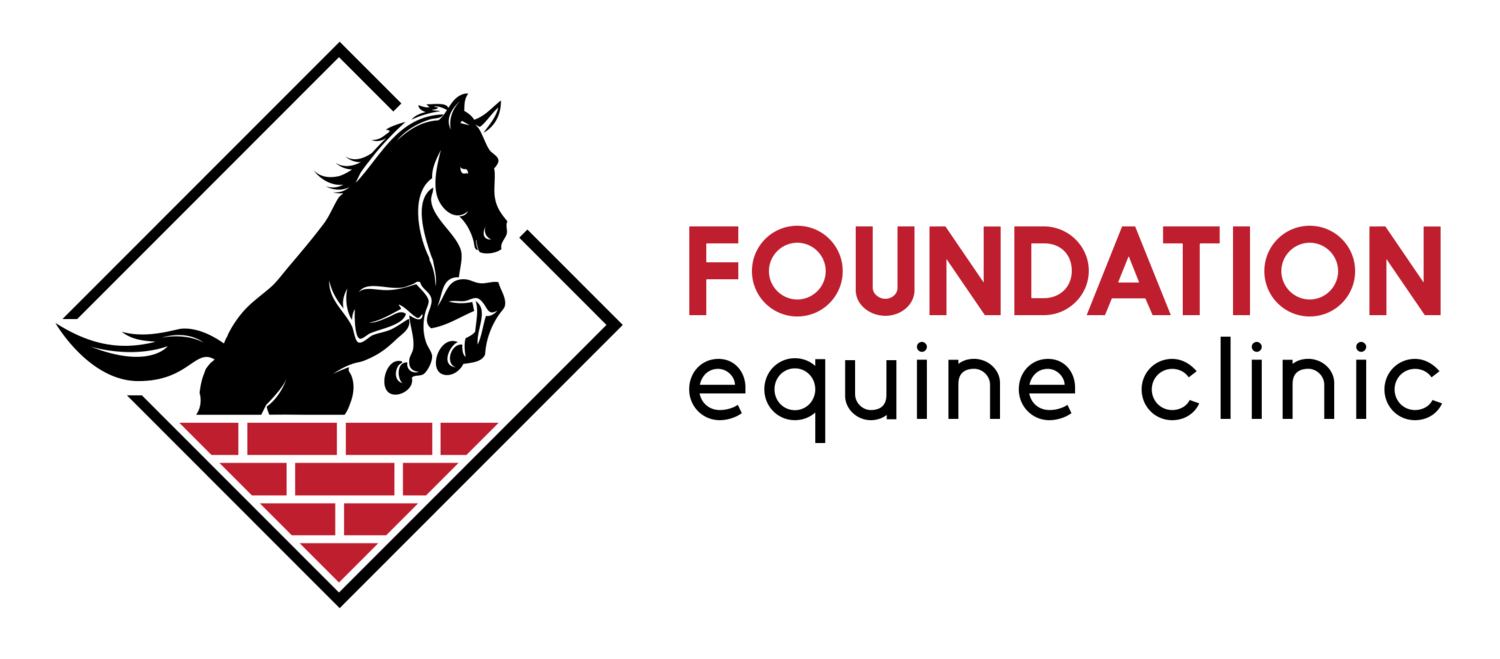Lameness Exams
Our lameness exams are detail-oriented and conducted with the goal of getting you an answer about a potential problem as quickly and accurately as possible! Whether your horse is an upper-level competitor or a retired pasture pal, we know that seeing your equine partner in pain is difficult. Every horse is treated as an individual at Foundation Equine, and our lameness exams are no exception. Each exam is tailored to your horse and your expectations and will include a combination of the following parts:
History-Taking
Each lameness exam begins with a thorough history. By actually listening to our clients, we can often learn a great deal about likely causes for a horse's poor performance or lameness. We know that a horse's owner, rider and trainer usually know him better than anyone else, and if the client thinks there is a problem, there usually is!
Static Exam
A static exam is the portion of the lameness exam that is performed before the horse is moving. While standing (preferably square), each horse is examined for conformation, symmetry and muscle development. Each joint, tendon and muscle group is then palpated for soreness, fluid accumulation, decreased motion or dysfunction. Hoof testers are also used to detect regional pain within a hoof. Back soreness, reduced neck motion, reduced joint motion, excess joint fluid, sore hoof areas, tendon enlargement and many other problems are identified on this portion of the exam.
Baseline Exam
After the static exam, a horse is examined in-hand while waking and trotting in a straight line. We make every effort to always bring a veterinary assistant to lameness exams so clients are able to observe the exam and hear the veterinarians thoughts while the assistant jogs the horse. During this portion of the exam, the veterinarian may identify overt lameness in a particular leg, abnormal footfall patterns or unusual movement of a portion of the body.
Flexion Testing
"Flexions" help clarify the location of a lameness by isolating the joint(s) that causes the horse pain. Flexion testing involves a 30-60 second manipulation of a joint, followed immediately by observation of the horse at a trot or secondary gait. A "positive" flexion indicates pain associated the the joint that was just flexed. For example, if a horse becomes lame or more lame after holding a front leg up with the fetlock flexed, we can identify that the fetlock, pastern or coffin joint of that leg is contributing to the problem.
"Blocking"
"Blocking" refers to the administration of a local anesthetic to a region of the horse's body. We may perform nerve blocks or joint blocks in the course of a lameness examination. An area of the leg that is "blocked" no longer feels pain, so if the horse becomes sound after a particular area is numbed, we can conclude that the numbed area is the cause for the pain. The anesthetic wears off after a few hours, so nerve and joint blocks can only be used for diagnosis, not treatment.
Lungeline and Ridden Exams
Sometimes the source of a lameness isn't obvious in-hand. It may be more apparent on a circle, or under tack. Lungeline exams can provide more information on a problem by enabling us to detect whether a horse is more lame with the affected leg to the inside, or to the outside, of a circle. These exams also allow us to evaluate engagement of the hindquarters and "swing phase" of each limb. Ridden exams may also be helpful when evaluating a horse's performance while working in a frame typical for the discipline. Our vets make every effort to be familiar with all different breeds and disciplines, which is particularly helpful when evaluating horses under tack.




